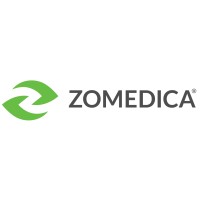Anti-bacterial Properties of K-Laser Therapy
By Dawn Billing RVN and Dr. Tristan Cogan Lecturer of Infectious Diseases
ECVS 2017 Congress Publication
The aim of the in vivo research is to determine the effects of K-Laser therapy on post-operative wound infection incidence and severity on laparoscopic spay wound healing post-operatively. The in vitro research is looking at the effect of laser therapy on the growth of enterobacteria.
Method:
This research is comprised of in vivo and in vitro studies. The in-vivo study compares ASEPSIS wound scores 2-5 days following laparoscopic ovarian hysterectomy from dogs that did and did not receive K-Laser therapy but had identical procedures and after-care. The in vitro study was conducted using cow skin samples. These were K-Laser treated with different energy densities in the first experiment and different wavelengths in the second. Swabs were taken and cultured then the colony forming units were counted.
Laser Therapy Introduction
 Laser Therapy is a technique in which monochromatic usually red, infra-red or near infrared light is applied to an area of tissue to aid tissue healing (photobiostimulation) and to provide analgesia. It used in both the medical and veterinary professions often as part of physiotherapy regimes. Its benefits to wound healing are fairly well documented and effects include downregulation of inflammatory cytokines and increased angiogenesis.
Laser Therapy is a technique in which monochromatic usually red, infra-red or near infrared light is applied to an area of tissue to aid tissue healing (photobiostimulation) and to provide analgesia. It used in both the medical and veterinary professions often as part of physiotherapy regimes. Its benefits to wound healing are fairly well documented and effects include downregulation of inflammatory cytokines and increased angiogenesis.
Its effects on pathogens are however poorly understood. With increasing antimicrobial resistance new innovative methods of treating and preventing infections are required. The effects of laser therapy on bacteria may have implications for its use on infected wounds and to prevent wound infections. The aim of this research is to determine the effects of K-Laser therapy on bacterial survival and if post-operative infection rate and severity is reduced by using laser therapy post-operatively.
One of the problems with research into laser therapy is that there are many different methods of producing laser light with different wavelength and power outcomes. Different devices use different chemicals to produce the required photons. This results in the production of light at different wavelengths and varying levels of power. The effects of laser therapy depend on the wavelength, energy density, power and frequency of laser energy applied to the tissue. For this project a diode gallium- aluminium- arsenide (GaAlAs) diode laser with four beams of different wavelengths (660nm, 800nm, 905nm and 970nm) is used. All four wavelengths can be used simultaneously or individually. It can be used in continuous or pulsed mode from 0.1W to a maximum power of 15W in continuous mode or 20W in pulsed mode (trademark K-LaserTM).
Results:
In vivo study: The results showed a significant increase in mean ASEPSIS score in the group that did not receive laser therapy compared to the K-Laser group.

Figure 1. Shows the significant reduction in Wound ASPESIS score compared to standard wound treatment in post-operative laparoscopic spay wounds
In vitro study: Results showed that an energy density of 20J/cm2 significantly reduced the CFU count of enterobacteria compared to 0J/cm2 and 7J/cm2, using 1W power and wavelengths 660nm, 800nm, 905nm and 970nm. The second experiment showed that when wavelengths 660nm, 800nm or 905nm are switched off a significant increase in CFU count using 1W power and 20J/cm2 occurred.

Figure 2. Reduction to zero infectious pathogens occurred when using 1.2W, 104J, four therapy wavelengths in the K-Laser protocol compared to lower power settings.

Figure 3. Shows the effect of removal of the 660nm 120mW red laser beam and the concurrent increase in infectious pathogens on a log scale.
Conclusion:
In vivo study: K-Laser therapy applied following surgery can reduce the incidence and severity of post-operative infections and accelerate wound healing, even in laparoscopic spay wounds compared the standard post-operative placebo group. In this study K-Laser using 660nm, 800nm, 905nm and 907nm wavelengths ,1.2W power, 104J total, 20J/cm2 and 10 phase different pulsing modes.
In vitro study: K-Laser therapy using 1.2W power, continuous mode, and therapy wavelengths 660nm, 800nm, 905 nm and an energy density of 20J/cm2 has a significant antibacterial effect on enterobacteria compared to the placebo group with removal of the 660nm wavelength (P≤ 0.009), the removal of the 800nm wavelength (P≤0.01) and the 905nm (P ≤ 0.004) respectively.
This research indicates an antibacterial effect of K-Laser therapy. It demonstrates that K-Laser therapy can be used to reduce the CFU count of enterobacteria. It also demonstrates that K-Laser therapy can be used to reduce the symptoms of wound infections in vivo. This research demonstrates a lot of potential for further research into this area, leading to discoveries which will hopefully lead to a reduction in the need for antibiotic use to treat wound infections.











)
)
)
)
)
)
)
)
)
)

)
)
)
)
)
)
)
)
)
)
)
)
)
)
)
)
)
)